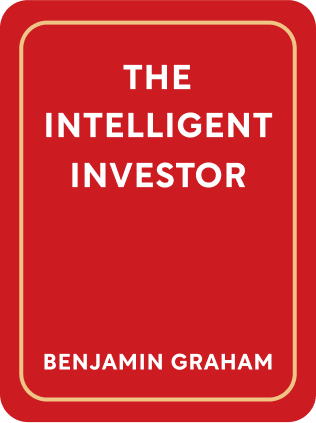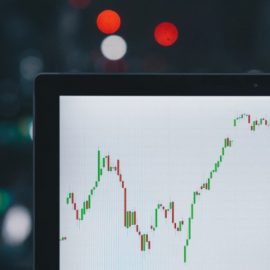

This article is an excerpt from the Shortform book guide to "The Intelligent Investor" by Benjamin Graham. Shortform has the world's best summaries and analyses of books you should be reading.
Like this article? Sign up for a free trial here .
Do you want to know how to choose a mutual fund? How do you know what funds to choose and what to look for?
Learning how to choose a mutual fund takes practice and strategy. There are several different types of mutual funds you can choose from, all of which have unique investment benefits.
Keep reading to find out how to choose a mutual fund.
How to Choose a Mutual Fund
Mutual funds come in many flavors. But you can employ certain strategies to learn how to choose a mutual fund:
- In scope, with some representing the entire stock market and others focused on particular industries such as Internet companies
- In location, with some focusing on the United States to those focused internationally
- In strategy, with some actively trading through proprietary strategies and others simply following an index like the S&P 500
- In degree of marketing, with some actively advertised and with an enthusiastic sales force, and others quietly operating with little marketing presence
- In fee amounts, with some charging, say, 3% of your holdings in annual fees, and others charging just 0.1%
With thousands of funds in existence, choosing the right one can be as perplexing as choosing the right stocks.
In summary, Graham urges the following cautions when deciding how to choose a mutual fund:
- When you invest in a fund, expect only returns in line with the overall market. Over history, the vast majority of funds do not outperform the broader market (especially after deducting fees). If you delude yourself into thinking you can vastly exceed market returns by choosing the right fund, you’ll seek out risky funds and deceptive marketing.
- Do not choose a fund simply because it has a recent hot streak. Most often, funds with outstanding recent performance are using risky strategies that have performed well recently but will falter in the long term. (We’ll cover why
- Be skeptical of funds that charge high fees. The higher the fees, the more the fund has to outperform the market for you to be in line with the market. For example, if the market returns 5%, then a fund that charges 1% in fees has to return 6% to be in line with the market.
- Be skeptical of funds that have aggressive marketing or salespeople. Salespeople are part of the fund’s operating costs, and thus you’ll be paying for their salaries and commissions with your fees.
Near the end of his life, Graham noted that index funds should be the default choice of most everyday investors (his protege Warren Buffett agrees). It’s the “boring” way to invest—you won’t be able to indulge in hot stock tips and boast about your own landmark stock win—but you will reliably accumulate wealth over time and beat most speculators.
Funds That Are “Too Good to Be True”
Graham comments on the recurring appearance of “performance funds” in history. This is important to consider when learning strategies for how to choose a mutual fund. Like clockwork, the cycle works like this:
- Certain funds appear with remarkable short-term performance (say, in the previous 1-3 years). Often they claim to have a special strategy or a young, genius stock picker in its leadership.
- The funds market themselves aggressively to get more investor money, and they balloon in size. Even reputable investors, such as pension funds and universities, may invest in these funds.
- In reality, the performance funds’ gains were achieved with risky strategies that simply got lucky in the recent past. These strategies are untenable in the long-term, and they quickly underperform the market, sometimes severely (say, by 30 or more percentage points).
- For some time, people become skeptical of these funds. But then they appear a few decades later, with the same promises.
Each time in history, funds appear with new tactics and marketing messaging:
- In the 1929 boom and bust, money managers often resorted to outright fraud and misleading reporting. These tactics were outlawed by the SEC.
- In the 1965-1969 period, new funds appeared with newer gimmicks, such as focusing on small stocks and misleading accounting.
- In the dotcom boom of the late 1990s, Internet funds appeared promising limitless growth but soon crashed more severely than the rest of the market.
(Zweig notes that major boom and busts seem to occur every 30 years, roughly the length of a human generation. By the end of a generation, people who have suffered major losses in previous crashes become less influential, and so societal memory becomes lost and naive optimism reigns again. If true, the next major boom and bust may occur around 2030.)
While most funds tend not to outperform the market, there is a small minority that do outperform over the long term. These tend to be small funds that don’t manage vast amounts of capital, suggesting that more capital causes funds to shift closer to market returns. Furthermore, these highly-performing funds tend to be closed to the public and thus out of your reach. (Shortform note: A notable example is the Medallion fund of Renaissance Technologies, which has produced staggering annualized returns of 66% between 1988 to 2018, before fees, compared to roughly 10% for the S&P 500 in the same period. The Medallion Fund manages just $10 billion and is available only to the firm’s employees and their families.)
Now that you know how to choose a mutual fund, you can make investments that are right for you.

———End of Preview———
Like what you just read? Read the rest of the world's best book summary and analysis of Benjamin Graham's "The Intelligent Investor" at Shortform .
Here's what you'll find in our full The Intelligent Investor summary :
- Key advice from what Warren Buffett considers the "best book about investing"
- The 2 major indicators you should use for evaluating stocks
- How you can use aggressive or defensive investing strategies






